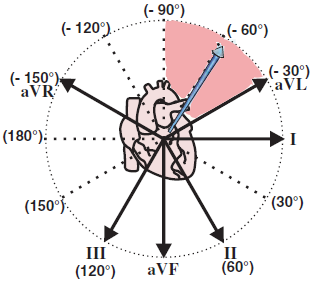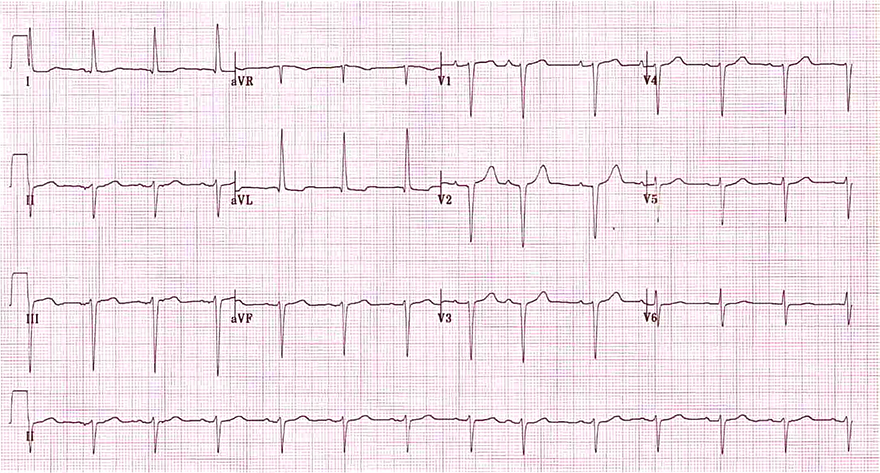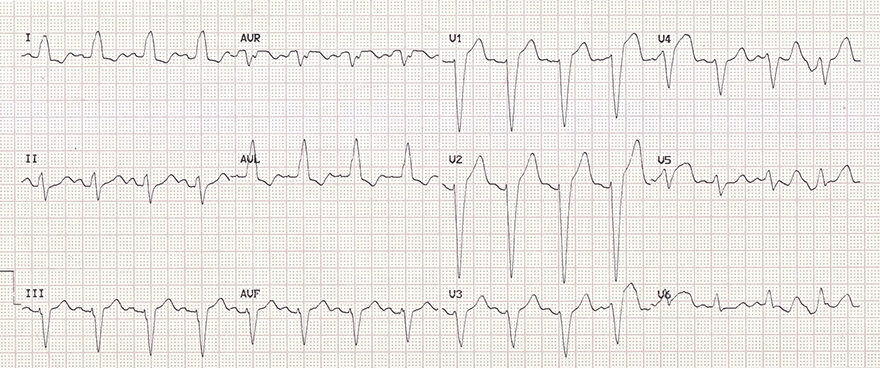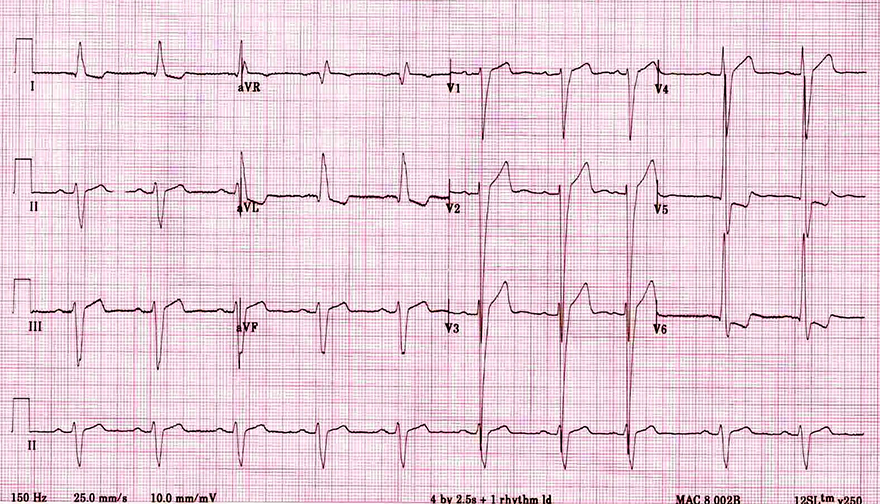Normal and Abnormal Heart Axis
- Normal (intermediate) heart axis vector is between -30° and +90° (yellow)
- Right Axis Deviation vector is between +90° and +180° (green)
- Left Axis Deviation vector is between -30° and -90° (red)
- Extreme Axis Deviation vector is between -90° and +180° (blue)

Normal (Intermediate) Heart Axis
- If leads I and aVF are positive
- The vector points to the lower left quadrant (0° to 90°) and the axis is normal
- If lead I is positive and aVF is negative
- The vector points to the upper left quadrant (0° to -90°)
- Lead aVL (-30°) is the boundary
- Between the normal axis and left axis deviation
- Lead II is perpendicular to lead aVL
- According to biphasic QRS in lead II, it is determined whether the axis is normal or deviated to the left















